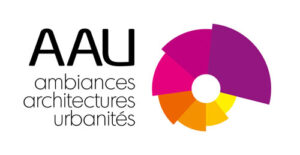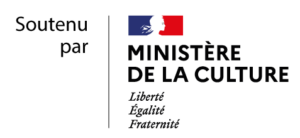Faten Hussein, Architect, PhD Candidate at CERMA research group UMR CNRS/MCC 1563, ENSA Nantes, France. PhD cosupervised by G. Hégron, J-P. Péneau and P. Joanne
Suzanne Soukeina, 84 years old, retired from the Tunisian Post Office, is no more practicing her favourite activity: walking. Cardiac problems linked to hearing loss due to age, that requires her to wear a hearing aid, make his universe considerably narrow these last years. She expressed to us her problems to evolve in public space: « I fear to fall … everyone runs outside, cars are going fast and my slowness makes me feel that i’m exposed to a danger each yard that i do… »1.
Many studies exploring the use of the city by the seniors raises the question of the safety to go outside when we reach an old age. The difficulties of moving are often an excuse to less attend public spaces. Another problem, also in charge of the loneliness of the elderly as the decrease of their physical abilities, is often ignored, because of its invisibility: the presbycusis. The loss of sound discrimination in the case of old pedestrian is causing many dangerous situations and accidents when crossing roads. No longer perceiving auditory warnings signals or, when they perceive them, they can’t situate them at their true origin, old pedestrian become vulnerable when evolving in the city. Suzanne Soukeina confides that « the cars drive fast and i can no longer hear their horns to know from where they come from … I’m afraid to cross, i’ll be crushed by the cars for sure »2.
She suffers from a moderate to severe neurosensorial hearing loss. If her hearing aid is very helpful in inside and closed spaces, it wasn’t calibrated for the open spaces. To detect the moments of changes in urban soundscapes and emergence of sound events that warn of a danger that this old woman is no longer able to discriminate aurally if she’s facing an urban configuration, field of a critical situation of danger3, we have used the technique of “audio textures4”. It’s a recent technique, borrowed from the field of image processing. It allows detecting graphically, through a matrix of inter-similarity5, the modifications of sonic ambiances during an urban walk. For this purpose, a segmentation algorithm6 of audio scenes was developed to detect if there is a similarity between two audio sequences.
Before crossing an intersection, one of the identified accident-prone urban configurations, we equipped Suzanne Soukeina with a wireless biosensor that measures electrodermal activity (EDA) which is an objective physiological indicator of stress level and very efficient to detect graphically on the outline of the EDA a stressful event for our subject. We can confirm with precision the occurrence in time and space of a dangerous and stressful situation during the walk. Suzanne Soukeina had a lot of problems to cross as shown by this excerpt from her comment: « We’ll cross that intersection? It’s stressing me … I’m afraid, I don’t know when I can go through … I can’t see if the traffic light is red or green and i am forced to rely on cars that stop there … We have to cross? Oh my god! This car didn’t stopped at the green traffic light … I haven’t heard or seen it coming … it honked? Fortunately, you are with me and the driver braked in time otherwise it would have crushed me … The city becomes dangerous for me, it’s over…. « 7
At the moment called »T », when Suzanne Soukeina crossed this part of the intersection which isn’t controlled by traffic lights and she couldn’t identify a near sound of a car’s horn, we analyzed this specific sound scene with the segmentation algorithm. We proceed to a definition of the temporal coordinates of the electrodermal reaction. Then we associate them with the segmentation of the sound scene at the place called »X » where appears the stressing reaction through a scanning of the inter-similarity matrix obtained. Finally, we could accurately determine the number of the sample of the sound sequence corresponding to the exact moment of the emergence of the dangerous situation that hasn’t been identified by the presbycusis senior.
The « audio textures » are a relevant sonic indicator for a presbycusis senior. The two-dimensional representation they provide allows us to graphically detect the occurrence of disabilities and to offer the needed corrections so that seniors leave their homes and go outside. The prospects of our PhD subject are to specify a guide that contains some palliative considerations to follow in order to avoid those situations of danger in the city faced by presbycusis elderly (traffic sonic lights which the signal is modified according to deficient hearing for high frequencies, a hearing aid incorporating a tracking of the horn’s cars…).
1. From an interview conducted before a commented walk with Ms. Suzanne Soukeina B. the 03/01/11 at Lafayette, Tunisia (12:34).
2. From an interview conducted before a commented walk with Ms. Suzanne Soukeina B. the 03/01/11 at Lafayette, Tunisia (12:46).
3. A situation of disability results from an incompatibility between physical environment and human abilities. Three situations of disability were identified: situations of discomfort, anxiety and danger (L. SABY, Vers une amélioration de l’accessibilité urbaine pour les sourds et les malentendants, thèse en génie civil, l’institut national des sciences appliquée de Lyon, 2007).
4. A set of repetitive sound elements, random organized, but in the same time it preserves a temporal and spectral coherence.
5. The matrix in obtained by: First, sampling the audio signal. Second, segmenting the signal into frames of 512 samples over the first 13 MFCC coefficients (The Mel scale is a frequencies scale based on human perception). Third, capturing the degree of similarity between two frames represented by two vectors i and j (based on the product of vectors). We obtain a square symmetric matrix presenting the audio signal as it has been manipulated through this algorithm segmentation.
6. Segmentation’s algorithm developed by Research unit « Signals and Systems », TIC Department, National school of Engineers, Tunis, Tunisia (ENIT).
7. From a commented walk with Ms. Suzanne Soukeina B. the 03/01/11 at Lafayette, Tunisia (13:17).



